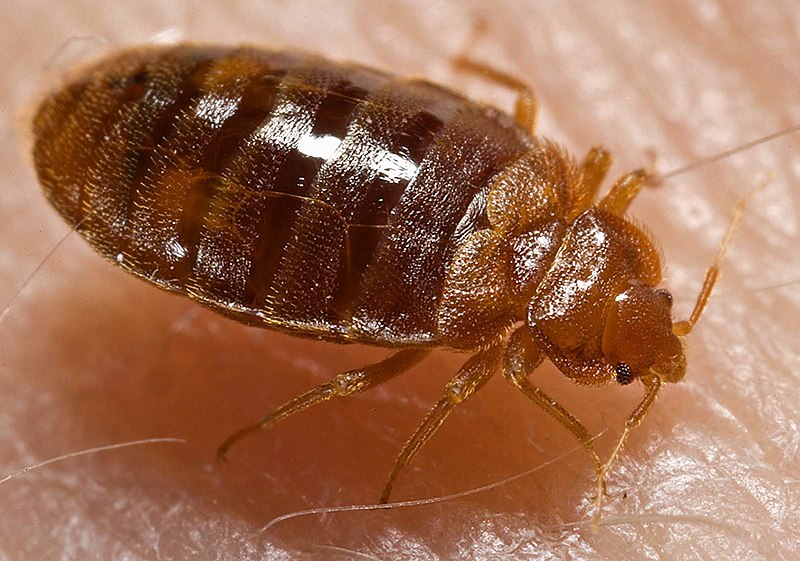Bestand:Bed bug, Cimex lectularius.jpg

Grootte van deze voorvertoning: 800 × 561 pixels. Andere resoluties: 320 × 224 pixels | 640 × 449 pixels | 1.024 × 718 pixels | 1.280 × 898 pixels | 1.600 × 1.122 pixels.
Oorspronkelijk bestand (1.600 × 1.122 pixels, bestandsgrootte: 161 kB, MIME-type: image/jpeg)
Bestandsgeschiedenis
Klik op een datum/tijd om het bestand te zien zoals het destijds was.
| Datum/tijd | Miniatuur | Afmetingen | Gebruiker | Opmerking | |
|---|---|---|---|---|---|
| huidige versie | 17 mei 2007 16:11 |  | 1.600 × 1.122 (161 kB) | Patho | == Summary == {{Information |Description=ID#: 9822 Description: This 2006 photograph depicted an oblique-dorsal view of a '''bed bug nymph, Cimex lectularius''', as it was in the process of ingesting a blood meal from the arm of a “voluntary” human h |
Bestandsgebruik
Dit bestand wordt op de volgende 6 pagina's gebruikt:
Globaal bestandsgebruik
De volgende andere wiki's gebruiken dit bestand:
- Gebruikt op af.wikipedia.org
- Gebruikt op an.wikipedia.org
- Gebruikt op ar.wikipedia.org
- Gebruikt op arz.wikipedia.org
- Gebruikt op ast.wikipedia.org
- Gebruikt op azb.wikipedia.org
- Gebruikt op be.wikipedia.org
- Gebruikt op bg.wikipedia.org
- Gebruikt op bjn.wikipedia.org
- Gebruikt op bn.wikipedia.org
- Gebruikt op bs.wikipedia.org
- Gebruikt op ca.wikipedia.org
- Gebruikt op ca.wiktionary.org
- Gebruikt op ceb.wikipedia.org
- Gebruikt op cs.wikipedia.org
- Gebruikt op cv.wikipedia.org
- Gebruikt op dag.wikipedia.org
- Gebruikt op de.wikibooks.org
- Gebruikt op din.wikipedia.org
- Gebruikt op el.wikipedia.org
- Gebruikt op eml.wikipedia.org
- Gebruikt op en.wikipedia.org
- Gebruikt op en.wikinews.org
- Gebruikt op en.wiktionary.org
Globaal gebruik van dit bestand bekijken.

